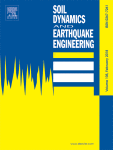عنوان انگلیسی: Single Camera 3D Digital Image Correlation Using a Polarized System
سال نشر: ۲۰۱۸
نویسنده: Junrui Li,Boyang Zhang,Xin Kang,Wan Xu,Guobiao Yang,Lianxiang Yang
تعداد صفحه فارسی: ۷ – تعداد صفحه انگلیسی: ۷
دانشگاه: Department of Mechanical Engineering, School of Engineering and Computer Science, Oakland University, Rochester, USA b Department of Mechanical Engineering, School of Mechanical and Electrical Engineering, Putian University, Putian, China
نشریه: Process Safety and Environmental Protection
کیفیت ترجمه: اقتصادی
چکیده
در این مقاله،روایت ارتباط تصویر دوربین دیجیتال سهبعدی با استفاده از یک سیستم شبه استریو پولاریزه، ارائه شدهاست. در مقایسه با سیستمهای معمولی ۳D-Dic با استفاده از استریو ویژن ، این سیستم،ساختار فشردهتر و مقاومت بهتر در برابر ارتعاش را دارد. در مقایسه با سیستم شبه استریو معمولی یک دوربین که سنسور CCD را به دو قسمت تقسیم می کند تا چشم انداز استریو را ثبت کند، سیستم مطرح، با استفاده از کل تراشه CCD ها بدون کاهش قدرت تفکیک فضایی به هر دو دیدگاه دست مییابد. به علاوه، مرکز دو دیدگاه در مرکز هر تراشه CCD، مشابه سیستمهای سهبعدی۳D-DIC قرار دارد، در نتیجه اعوجاج تصویر را در مقایسه با سیستم شبه استریو معمولی به حداقل میرساند. دو دیدگاه همپوشانی در حسگر CCD با استفاده از حالتهای مختلف پلاریزاسیون از هم جدا میشوند و الگوریتم استاندارد۳D-DIC میتواند مستقیما برای انجام ارزیابی استفاده شود. تنظیمات اصلی و آزمایشی به طور مفصل شرح داده میشوند و تستهای متعددی برای اعتبار سنجی سیستم انجام میشوند.
Abstract
In this paper, a novel single camera three dimensional digital image correlation (3D-DIC) system, using a polarized pseudo-stereo system, is proposed. Compared to traditional 3D-DIC systems using stereovision, it has a more compact structure and better vibration resistance. Compared to the conventional single camera pseudo-stereo system that splits the CCD sensor into two halves to capture the stereo views, the proposed system achieves both views using the entire CCD chip without reduction of the spatial resolution. In addition, the center of the two views stands in the center of the CCD chip, similarly to conventional 3D-DIC systems, thus minimizing the image distortion compared to the conventional pseudo-stereo system. The two overlapped views in the CCD sensor are separated using the different polarization states, and the standard 3D-DIC algorithm can be utilized directly to perform the evaluation. The principal and experimental setup are described in detail, and multiple tests are
امتیاز شما:





